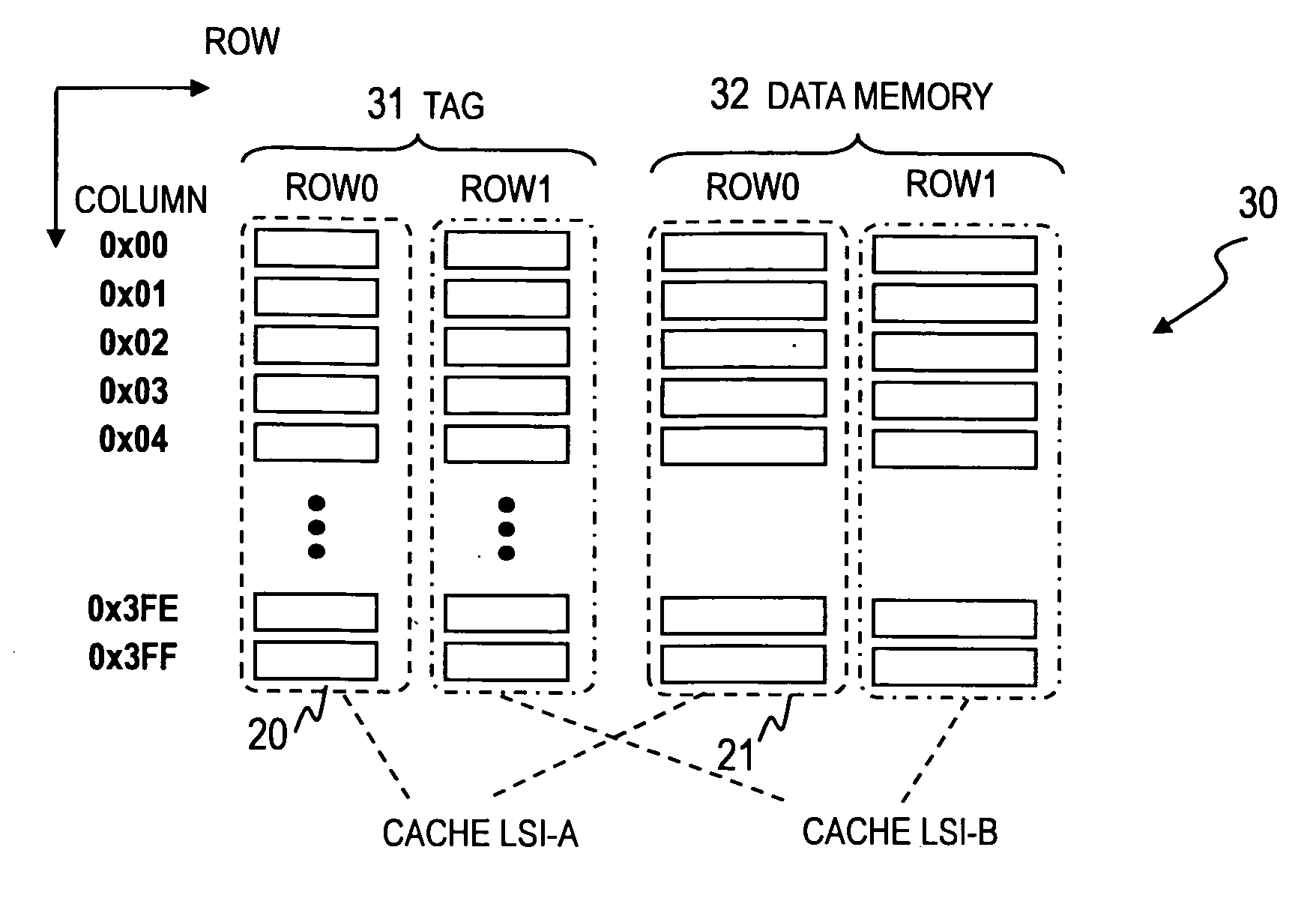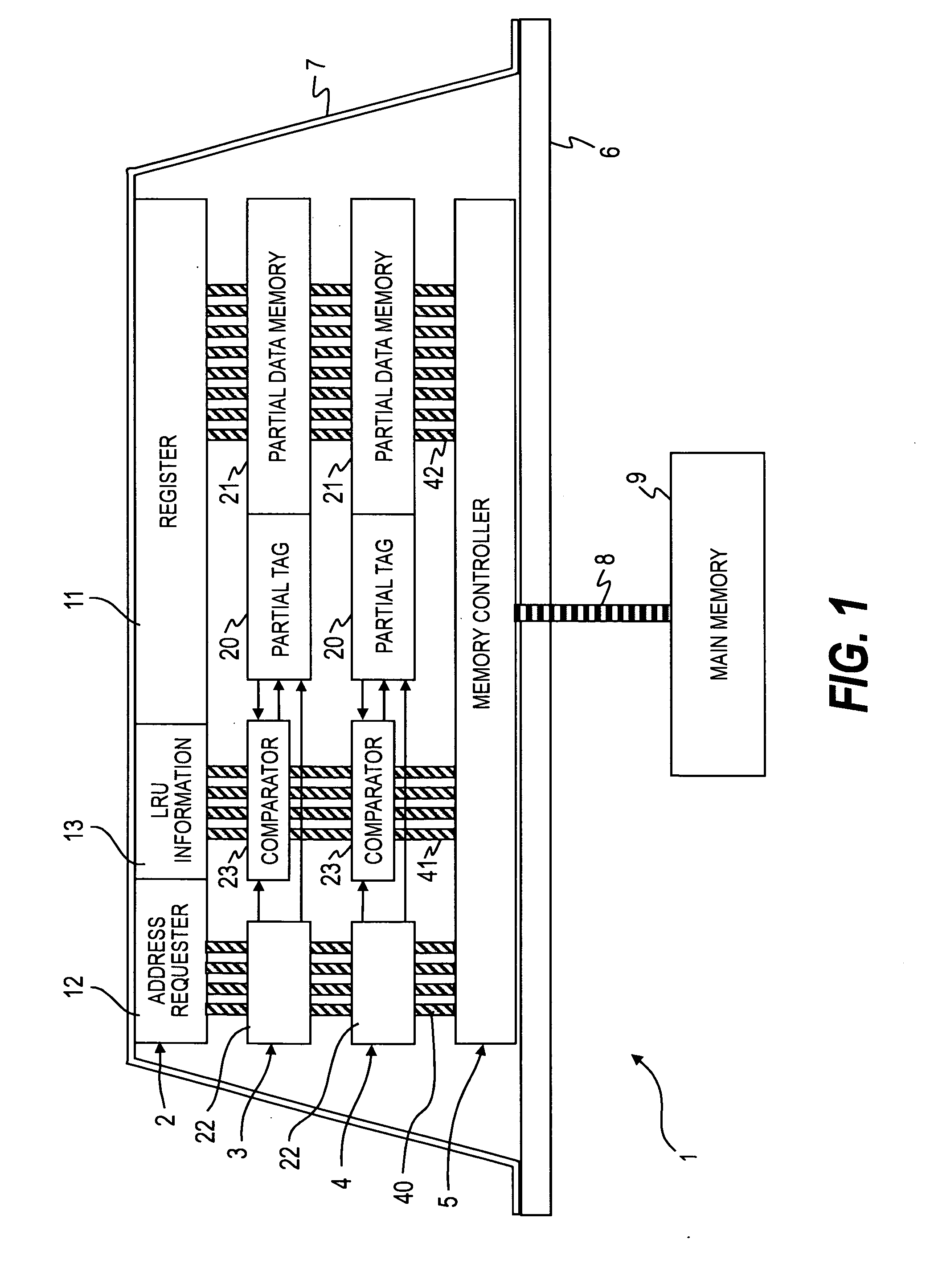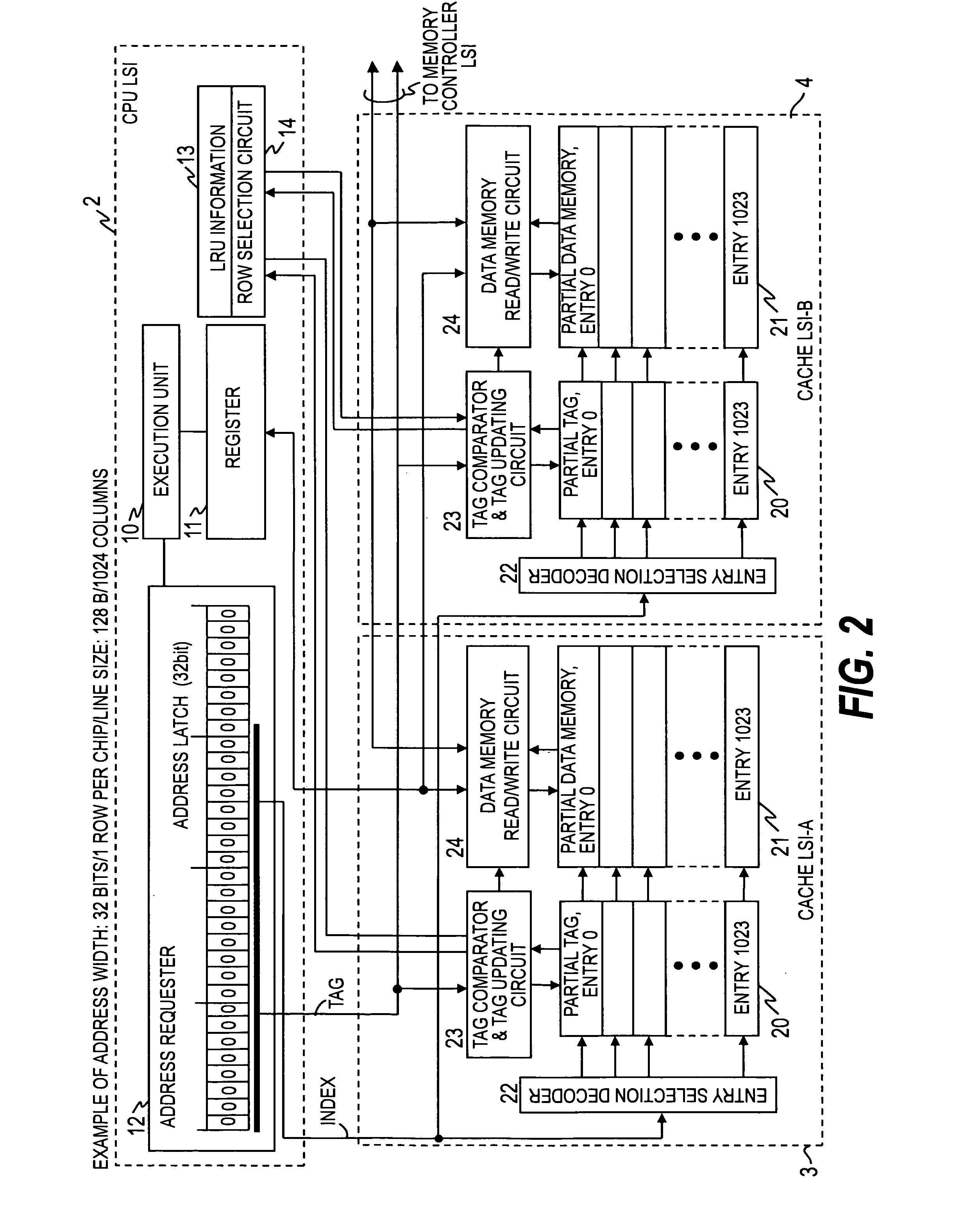Processor having a cache memory which is comprised of a plurality of large scale integration
a processor and cache memory technology, applied in the direction of memory adressing/allocation/relocation, instruments, computing, etc., can solve the problems of reducing the capacity of caches mounted on one lsi, complicating the circuit structure of each layer, etc., to achieve simple circuit structure, increase or decrease cache memory capacity, effect of quick cache access
- Summary
- Abstract
- Description
- Claims
- Application Information
AI Technical Summary
Benefits of technology
Problems solved by technology
Method used
Image
Examples
second embodiment
[0068]FIG. 5 is a sectional view showing important parts of the processor 1 according to a second embodiment of this invention. The second embodiment is obtained by modifying the LRU information storing unit 13 of the first embodiment. The CPU-LSI 2 of the second embodiment has, in place of the LRU information storing unit 13 of the first embodiment, a chip LRU information storing unit 13A which keeps chip LRU information for identifying which of the cache LSI-A and the cache LSI-B is available for refilling. The cache LSI-A and the cache LSI-B each have a partial LRU information storing unit 130 which keeps partial LRU information for identifying which cache line in the cache LSI is available for refilling. The rest of the second embodiment is the same as the first embodiment.
[0069]The LRU information, which is small in capacity compared to tags as mentioned above, still takes up a fair capacity when the cache LSI-A and the cache LSI-B have many cache lines. To reduce the capacity ...
third embodiment
[0072]FIG. 6 is a sectional view showing important parts of the processor 1 according to a third embodiment of this invention. In the third embodiment, the through electrode 40 of the first embodiment is changed from parallel signal lines to serial signal lines, and a serial-parallel conversion circuit is added to each LSI to transfer bit string information. The address requester 12 of the CPU-LSI 2 is provided with a parallel-serial conversion circuit (serializer (SER) circuit) 120, which sends address information to a through electrode 40A formed of serial signal lines, the entry selection decoders 22 of the cache LSI-A and the cache LSI-B are each provided with a serial-parallel conversion circuit (deserializer (DES) circuit) 220, which converts serial signals of the through electrode 40A into parallel signals, and the memory controller LSI 5 is provided with a serial-parallel conversion circuit (DES circuit) 520. The rest of the third embodiment is the same as the first embodime...
fourth embodiment
[0074]FIGS. 7 and 8 show a fourth embodiment of this invention, and an application of SIP packaging in which the LSIs of the first embodiment are linked by a plate-like interposer 60. The structures of the LSIs 2 to 5 are the same as those in the first embodiment.
[0075]FIG. 7 is a plan view showing important parts of a processor 1A on the interposer 60. FIG. 8 is a sectional view of the processor 1A.
[0076]In FIG. 7, the LSIs are placed on the interposer 60 such that the CPU-LSI 2, the cache LSI-A, the cache LSI-B, and the memory controller LSI 5 are arranged in the stated order from top to bottom of the drawing. The LSIs 2 to 5 are disposed on the top surface of the plate-like interposer 60 as shown in FIG. 8.
[0077]Wiring lines laid on the interposer 60 replace the through electrodes of the first embodiment. Wiring 640 is used to broadcast address information from the address requester 12 to the cache LSI-A, the cache LSI-B, and the memory controller LSI 5. Wiring 641 is used to bro...
PUM
 Login to View More
Login to View More Abstract
Description
Claims
Application Information
 Login to View More
Login to View More - R&D
- Intellectual Property
- Life Sciences
- Materials
- Tech Scout
- Unparalleled Data Quality
- Higher Quality Content
- 60% Fewer Hallucinations
Browse by: Latest US Patents, China's latest patents, Technical Efficacy Thesaurus, Application Domain, Technology Topic, Popular Technical Reports.
© 2025 PatSnap. All rights reserved.Legal|Privacy policy|Modern Slavery Act Transparency Statement|Sitemap|About US| Contact US: help@patsnap.com



